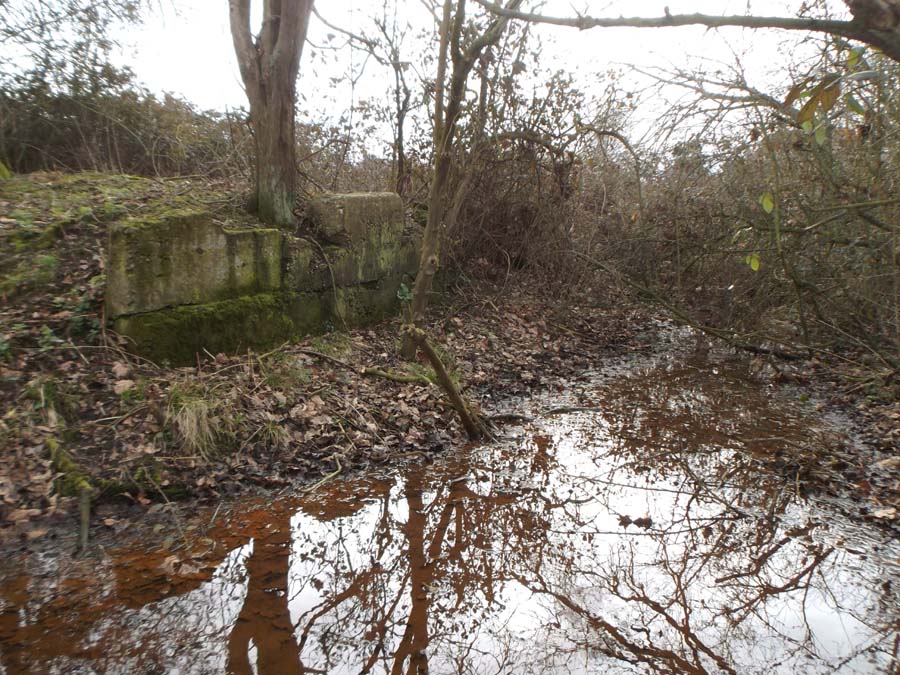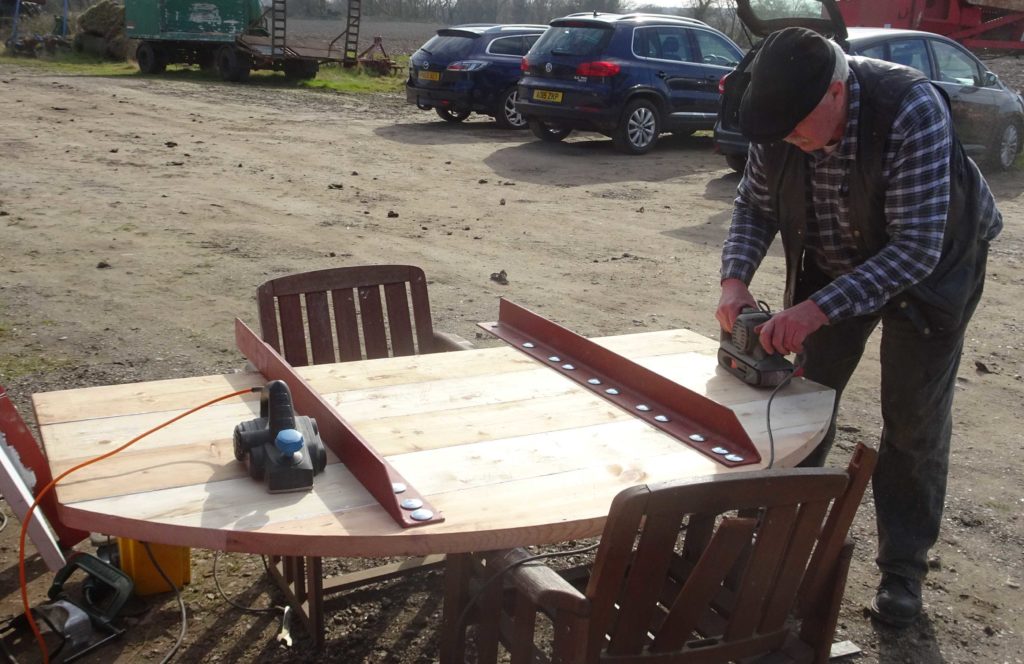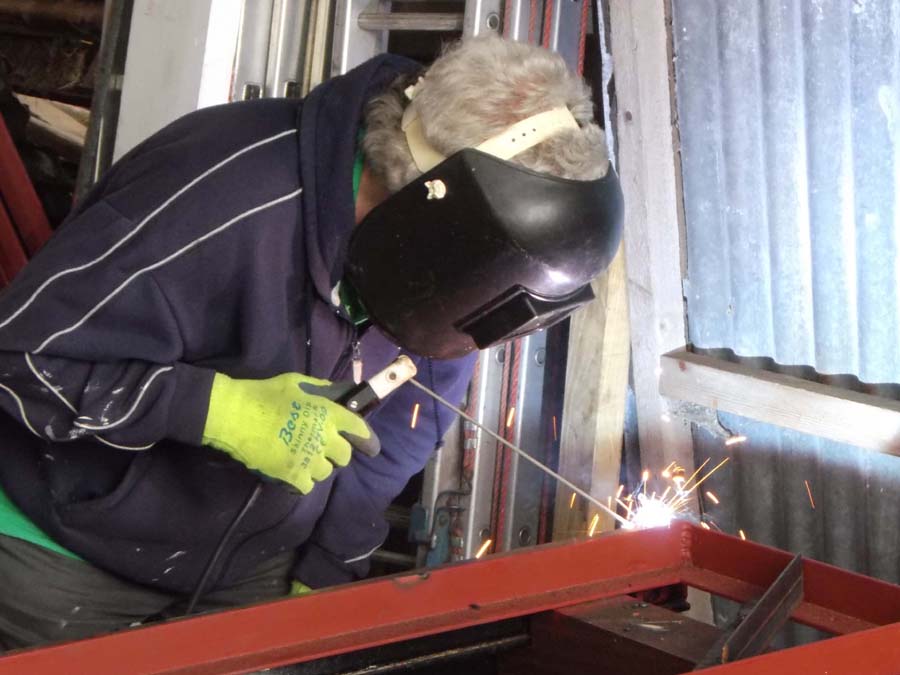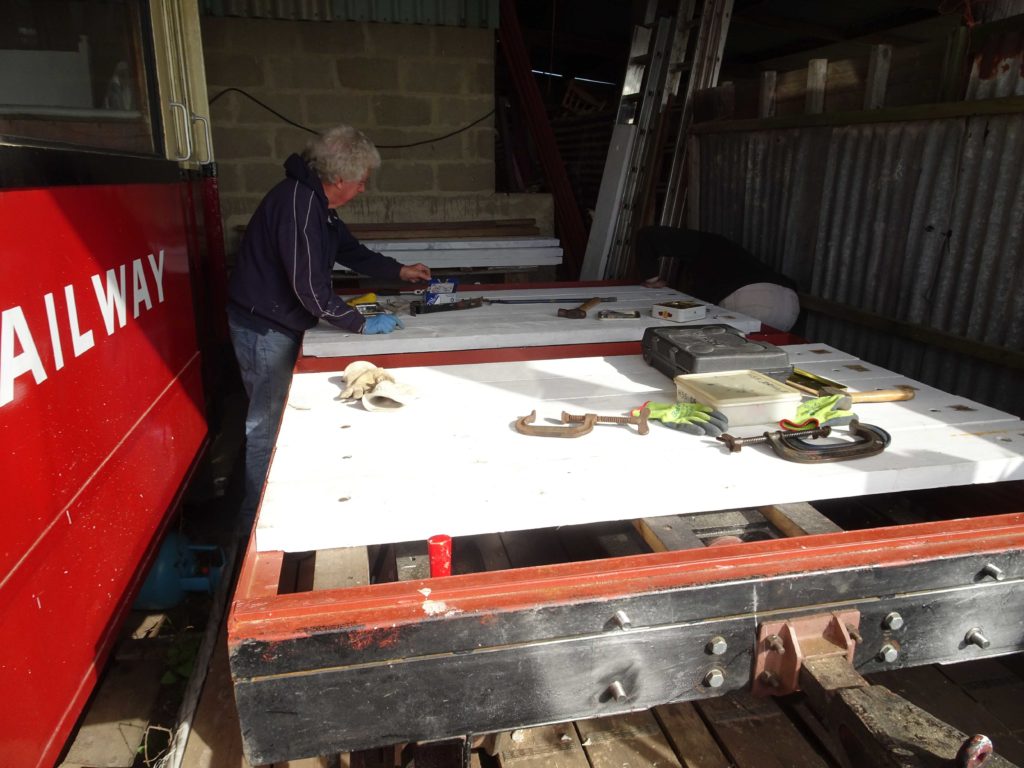Now that the weather is slowly improving, the pace is accelerating on the railway. On the trackbed at Wenhaston Station, considerable clearance has been done: with the nesting season in force, no tree work can be done, but the team has prepared a great deal of underbrush, dead bramble, fallen trees, and general detritus over the winter. All that can now be logged or burnt. Many spring bulbs have also been planted.

At the workshop, further building improvement and timber store re-organisation are in hand, while the track for “Scaldwell” is firmly boxed in, using donated scalpings. Privately-owned Motor Rail Simplex “Mells” has been thoroughly rubbed down with wet and dry (the team were careful not to let the Chairman near that job, as he is likely to take all the undercoat off, so we’d have to start again). The original cab has also been prepared for painting: this is somewhat cramped (although designed for two, there is really only room for one), but gives the design a quirky charm.

Open Wagon 41 is almost through the marathon of getting the floor done (it’s also structural, so is quite a complex fabrication): the curved ends are complete, having each had 10 M16 holes hand-filed (yes, I know we go on about this – but it is so many hard days’ work that a brand new 300mm square file is now worn almost smooth!), and the trapped bolts for the 6 hinges are ready to be welded on. The wagon is in such a cramped space that it will be pretty hard to get the sides assembled – and it will be impossible to open them, as Coach 7 (the tram trailer) is in the way. The GER freight grey paint is in hand, and we can begin to believe that we can see the end of this project.

Meanwhile, at the SOLD workshop in Lowestoft, Van 40’s sliding doors are being fitted on their tracks, so that, with the floor fitted as well, painting (crimson lake) can be completed. There will be some cosmetic metalwork to be done by SRT volunteers, but all the hard work on the hardwood body has been done by SOLD.
Once these two wagons are complete (the air brakes and chopper couplings are another, future, project), the Trust will have to take stock of where to go next. The Brake Composite Balcony Coach No 8 is the last vehicle currently planned for the Heritage Train, but there is simply not the space (or the funding) to do this at the moment. It may prove necessary (depending on developments at Southwold and elsewhere) to provide a temporary simple passenger coach on another Royal Naval underframe, before the replica coach is tackled. We know this can be done, as a similar coach has been running at the WHHR for many years.

Negotiations are in hand to purchase the land at Southwold for the “Steam Works” Project – a great deal more funding will be required to complete the site, with its visitor centre, workshop, shop, museum, and 22-chains of track in two gauges. It has proven very hard to organise the move to Suffolk of Peckett locomotive “Scaldwell”, because of its weight, its value (it is remarkably complete), and because of the cramped conditions for both uplift and set-down – but it will happen – we hope, sooner rather than later.
Our own Model Show at St. Edmund’s Hall in Southwold, on April 29th, will open from 10 till 4, and promises to be as successful as past shows. Narrow gauge and light railway layouts will be joined by some nostalgic 3-rail Hornby Dublo, which older readers may well remember from the 1950s.
